The vehicle we have to show you today is quite possibly the greatest 1970 Pontiac Firebird Trans-Am, ever. It is a 100% custom car hand-built by the most dedicated young man we’ve seen in a very long time.
Meet Riley Stair – a young car builder with a huge passion for his art who took up car building from his father. After several projects involving BMWs, Riley channeled his engineering, fabrication and design abilities into this gorgeous 1970 Pontiac Firebird Trans-Am.
It takes everything you’ve got and more
If you ever wanted to build custom cars for a living, this is all the inspiration you need.
For the better part of 20 months, he worked outside of his parents’ house – cutting, welding, grinding and polishing each individual piece of his car. The only thing he didn’t do himself was powder coating and painting the vehicle.
Riley poured all his time and money into the build. He sold his truck and quit his job just so he could finish in time for SEMA, where the car premiered in Vibrant Performance’s corner.
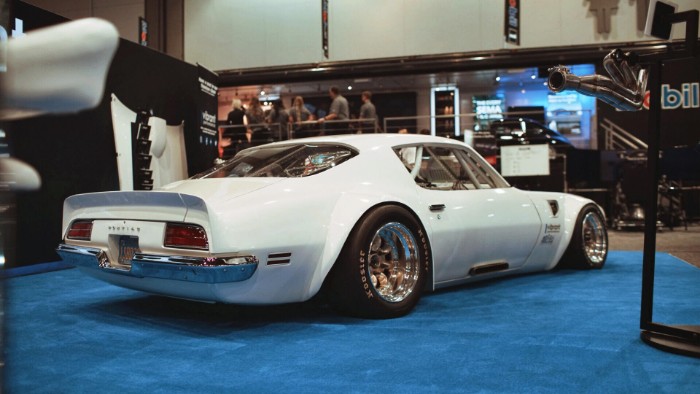
He used every available second. The vehicle arrived on site at 1 a.m, October 30th – the launch day of SEMA 2018. We’re convinced he took the ride to Vegas in the trailer, with the Firebird, adding finishing touches on the finishing touches.
Needless to say, the car absolutely killed it during the show. It became a favorite of many big names in the automotive world, including the Hoonigans who produce the Build Biology series.
There are a million and one cool things about this 1970 Pontiac Firebird Trans-Am. But, we’ll just go over a handful which drew most of the attention on this build.
Wide and low
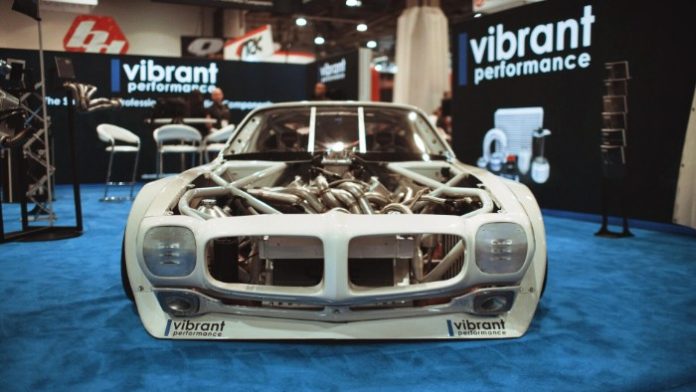
The Firebird is exactly 7 ft wide. Riley decided on the largest width that can fit into his trailer, which he later sold along with his truck to finish the car.
The body is a single layer of stock Firebird Trans-Am panels. Riley later fitted the giant wheel arches, which extend all the way to the top bend of the quarter panels and a good 5-6 inches to the side.
The aluminum air dam which connects to both front wheel arches scrapes just a couple of inches above the ground.
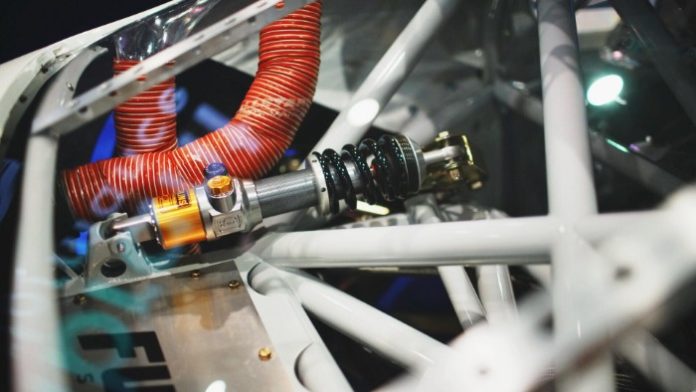
The cantilevered shock absorbers from Öhlins create a stiff suspension. This is needed to keep the floor just barely above the pavement. At the end of the video, you can see the underbody of the vehicle. Observe how everything is neatly tucked in, to prevent any scraping.
Tubular chassis
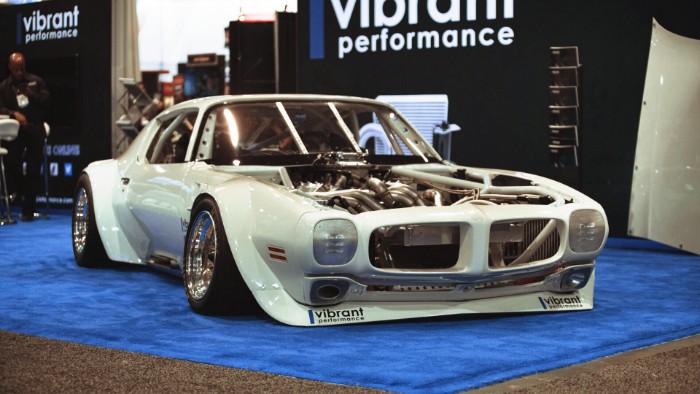
A distinctive feature of the car is the tubular chassis design which has an almost organic form. It’s custom built to accommodate the setup of the car.
For a start, it’s worth noting that there is no body on this Firebird. It’s literally just skin on frame, meaning Riley’s chassis needs to do all 100% of the hard work.
The engine needs a lot of interior space. And then, there are all the custom mount points for the suspension, control arms, steering linkages, etc.
Powertrain and engine bay setup
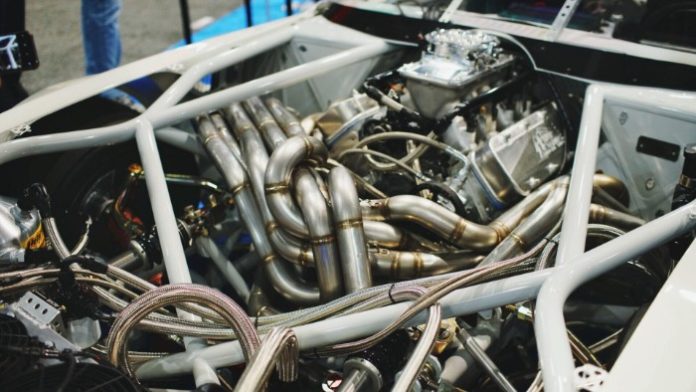
This car isn’t just a sculpture. It’s geared for high-performance and at the heart of that is a 6.5-liter, Dart LS, Next2 block, V8 engine. This is a drag-specced engine featuring very high-tech, top dollar parts, including:
- Half-inch main bearings
- Custom Callies Crank – short stroke, spins up to 10,000 rpm
- Custom aluminum rods
- Custom JE pistons – 16.25:1 compression ratio
- Titanium valves
- Custom billet camshaft – large cam motion
- Naturally aspirated
The power plant has already been dyno-tested, producing 700 hp at the wheels and spinning up to 10,000 rpm. Ultimately, Riley aims for 1,000 horses at the flywheel.
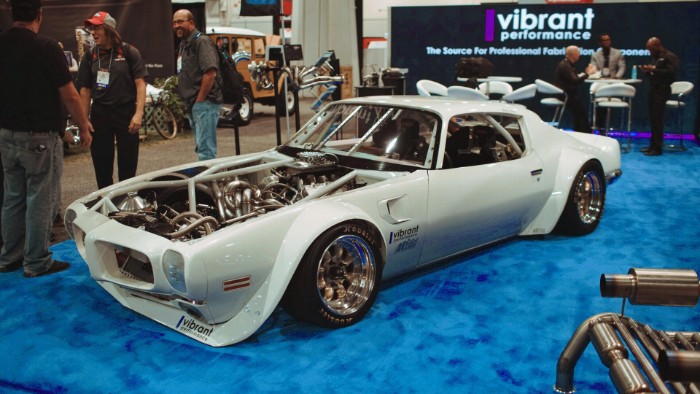
Cooling comes from an incredibly complex oil plumbing and cooling system. It’s powerful enough to leave just the right amount of oil in the engine block, keeping the rotating assembly moving at 10,000 rpm. At the same time, it’s tender enough to not strip the oil off the cylinder walls and keep everything lubricated.
Taking power to the rear axle is a NASCAR sourced T101A 4-speed, dog box transmission.
Spaghetti headers
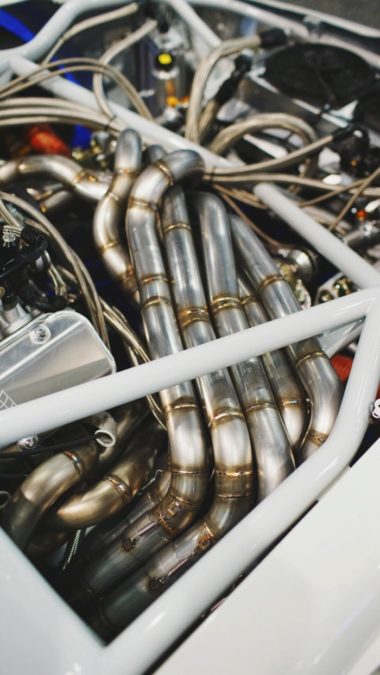
Call them what you will. These wrapping exhaust headers are gorgeous and if we had to pick one centerpiece in this 1970 Firebird Trans-Am, these would be it.
The design is borne out of space limitation. With the car riding low and the engine tucked all the way in the back, there was literally no other way for the headers but forward.
Riley wanted an 8-to-1 collector, which he built himself. The only way to route the headers to the collector under the passenger side and keep them equal length was to weave them in this intricate design.
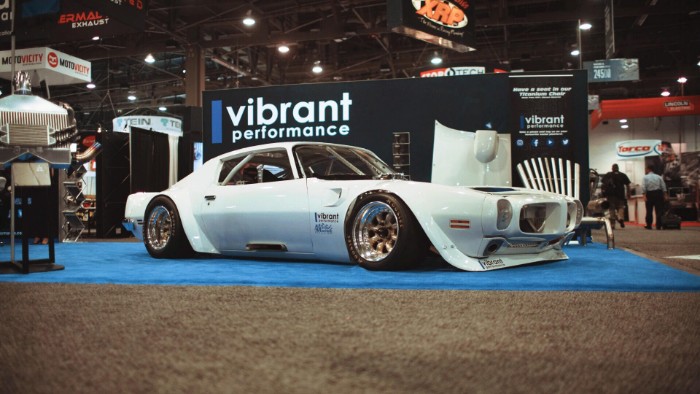
We can keep talking about this car forever, but we’ll save some details to share when we finally get footage of Riley ripping it on the track.
We leave you with Vibrant Performance’ showcase of SEMA 2018. It features a handful of tricked-out customs, including Riley’s 1970 Pontiac Firebird Trans-Am.